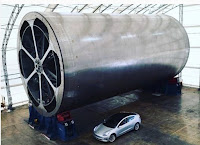 |
| My friend's project |
 |
| Wider view of showcase. |
For my final event post I went to
an event that was far more impactful than I realized it would be. I attended
the UCLA Design and Media Arts Senior Showcase at the Broad building on campus.
I was attending specifically to see a close friends project (pictured right),
but also stayed to see the other students work. It was absolutely astonishing
to see the powerful art that other students, the same age as me, were creating.
The first
thing that stood out to me at this showcase was the prevalence of technology in
every project. This was the first time I had been surrounded by so much art
created solely by members of my generation, so it was interesting to see the
way that technology has woven itself into every facet of our lives. Students
used cellphones, televisions, projectors, and even brainwave scanners to tie
their piece together.
 |
| Bracelets from Kenya that were part of my friends project. Quotes from the book below. |
More on that last piece of tech; a
small girl sat in a chair with one chair across from her. Overhead were many
paper lanterns hanging in a way that they nearly enclosed the two chairs. Every
lantern had a single light inside, and the girl had a band around her head.
This band could detect different brainwaves and would trigger a light to go off
in one lantern based on the brainwave received. The girl documented her dreams
over the last six years, and she would read you one of her dreams so you can
see what type of neural response that emitted. All I could think of while
participating was the potential that technology such as this can have on both
art but society in general. The ability to understand, and potentially
replicate, human brainwaves could be integral for progress with artificial
intelligence.
I saw one other exhibit at the
showcase that immediately reminded me of the Math + Art unit of this class.
This exhibit was a replica of a mundane work station: a desk, chair, computer,
a few cabinets, a calendar and little to no décor. There was one projector
aimed at the work station, and the projection perfectly enveloped the space.
Using projection mapping technology this artist was able to project different
animals on different portions of the space, all using one projector. The
cabinets, the desk, the calendar, even the sticky notes on the cabinets, all
had their own perfectly sized projection. I spoke with the artist about the
tech used to make this project a reality, and they spoke primarily about the
difficulty with perfecting every angle to make the projection appear correctly.
The math needed to account for the angle of the projector and angle of the
props was challenging but rewarding according to the artist.
This event was more impactful than
I expected it to be because I too am a graduating senior. It was genuinely awe-inspiring
to see the work that students were
creating and to be able to relate my knowledge from this class to something so
intertwined with my own student experience.
References
“Math and Art: The Good, the Bad, and the
Pretty.” Math and
Art: The Good, the Bad, and the Pretty | Mathematical Association of America.
Wilson, Stephen D. “Myths
and Confusions in Thinking about Art/Science/Technology.” College Art Association Meetings. New York,
New York, 2000. Print
“Math and Art: The Good, the Bad, and the Pretty.” Math and Art: The Good, the
Bad, and the Pretty | Mathematical Association of America,
www.maa.org/meetings/calendar-events/math-and-art-the-good-the-bad-and-the-pretty.


